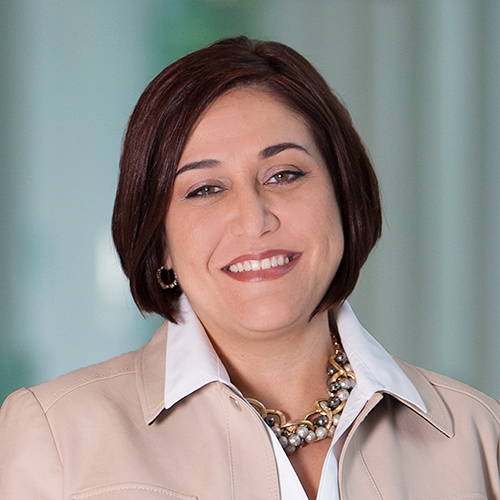When Gustavo Perez-Fernandez’s grandmother had to have a pacemaker put in, she spent three days in the hospital. “There must be a better way,” thought Perez-Fernandez, who went to visit her in his home village two hours from Madrid. He wondered why patients like his grandmother shouldn’t be able to undergo the procedure and then go home the next morning. “How do we make that happen?” he wondered.
When he returned to the GE Healthcare Surgery headquarters in Salt Lake City, Utah, Perez-Fernandez, the president and CEO of GE Healthcare’s surgery business, set out to answer that very question. His division of the multinational conglomerate makes computed tomography and other imaging devices for general surgery, urology, cardiovascular procedures, pain management, orthopedics, and radiology.
“What we provide are the machines that help guide the doctors and help them to see what they need to see,” he says. The machines are part of the modern doctor’s bag of tools, which help them to “do their job and save lives,” he says.
One of those most widely used machines is the C-arm: an imaging scanner intensifier with radiographic capabilities that helps surgeons in many different specialties to better see the inner workings of patients’ systems. It tells surgeons where to make an incision and if a procedure can be done laparoscopically. Three out of every four C-arms on the market today come from GE, Perez-Fernandez says.
GE Surgery is continually improving the ergonomics of the C-arm, its portability, and the quality of the image it produces. The GE Surgery team also monitors the radiation levels and make sure that patients are getting the lowest possible dose.
Last year, Perez-Fernandez oversaw the release of a new computed tomography (CT) scanner, the Revolution CT. After its clinical trial, the scanner was used on a four-month old baby in Peoria, Illinois, who doctors thought needed open-heart surgery.
“In less than a quarter of a second, they were able to find the problem with a very low dose of radiation,” Perez-Fernandez says. Because of the accuracy of the scanner, the doctors discovered that they could treat the condition with medication. “They didn’t need to open a four-month-old baby,” he says. “When you can change the life of a little one … that is what makes me tick. I see what we can do to help people and then think about what we can do on a global scale. This is not just about a doctor helping a certain number of people per year. We are making machines that can change the lives of millions of people worldwide.”
Perez-Fernandez, who was born in Spain, began his career with GE in France. He has a master’s degree in engineering and had intended to get his PhD and become a professor before moving to Paris to explore an opportunity with GE Healthcare. “I was 23 years old, and I showed up in Paris without speaking a word of French—and not much money in my pocket,” he says.
After a few years, Perez-Fernandez transferred to Chicago to continue working for the company and to get his MBA at Northwestern University. By then he had worked in commercial and manufacturing areas of the company, but after finishing his degree, he moved into program management. He has since moved up through roles as general manager in a variety of capacities, head of production, and now president. “My roles have been diverse. The company has given me a lot of opportunities to learn something new, and personally, I like learning,” he says.
Over his tenure with GE, Perez-Fernandez has also developed a strong relationship with Hewlett Packard. He explains that what GE Healthcare does in the radiology field would not be possible without its partnership with HP, which provides all the computer devices in GE’s equipment. “Inside of every CT and MRI machine GE produces is an HP computer [server] that can process the amount 40 GB of data per second,” he says.
“It has been a great business relationship, and we are hoping to expand it,” Perez-Fernandez adds. “HP allows us to present that information in real time, so the person in the other room can look at the images and see what he or she needs to see.”
Perez-Fernandez hopes that these CT and MRI machines will become even more widely used, globally. “While the C-arm is prevalent in the United States and Europe, our next goal is to get them into the hands of doctors worldwide,” he says. “There are still huge gaps in places that don’t have these devices because they are so expensive.” He is working to change that: earlier in 2015, GE signed a deal to move 100 units to Kenya and 120 to Turkey.
“I see what we can do to help people and then think about what we can do on a global scale. This is not just about a doctor helping a certain number of people per year. We are making machines that can change the lives of millions of people worldwide.”
Perez-Fernandez, who speaks English, Spanish, French, German, and is learning Japanese to honor his wife’s heritage, says his international background has shaped his career. “I think speaking multiple languages makes your brain more flexible and capable of understanding how people think,” he says.
He also tries to surround himself with a diverse group at work. His team includes people from Russia, Israel, Palestine, China, Mexico, Canada, and the US. “The diversity of thought is very important for my style of leadership. I’m not looking for people who are exactly like me—that would be terrible,” he says, laughing.
No matter where in the world he bases his work, Perez-Fernandez has always been focused on one thing: helping GE change the health-care world. “Coming to work for me is actually like a hobby,” he says. “I love coming to work every day and being surrounded by really, really smart people. It gets my juices going.”

